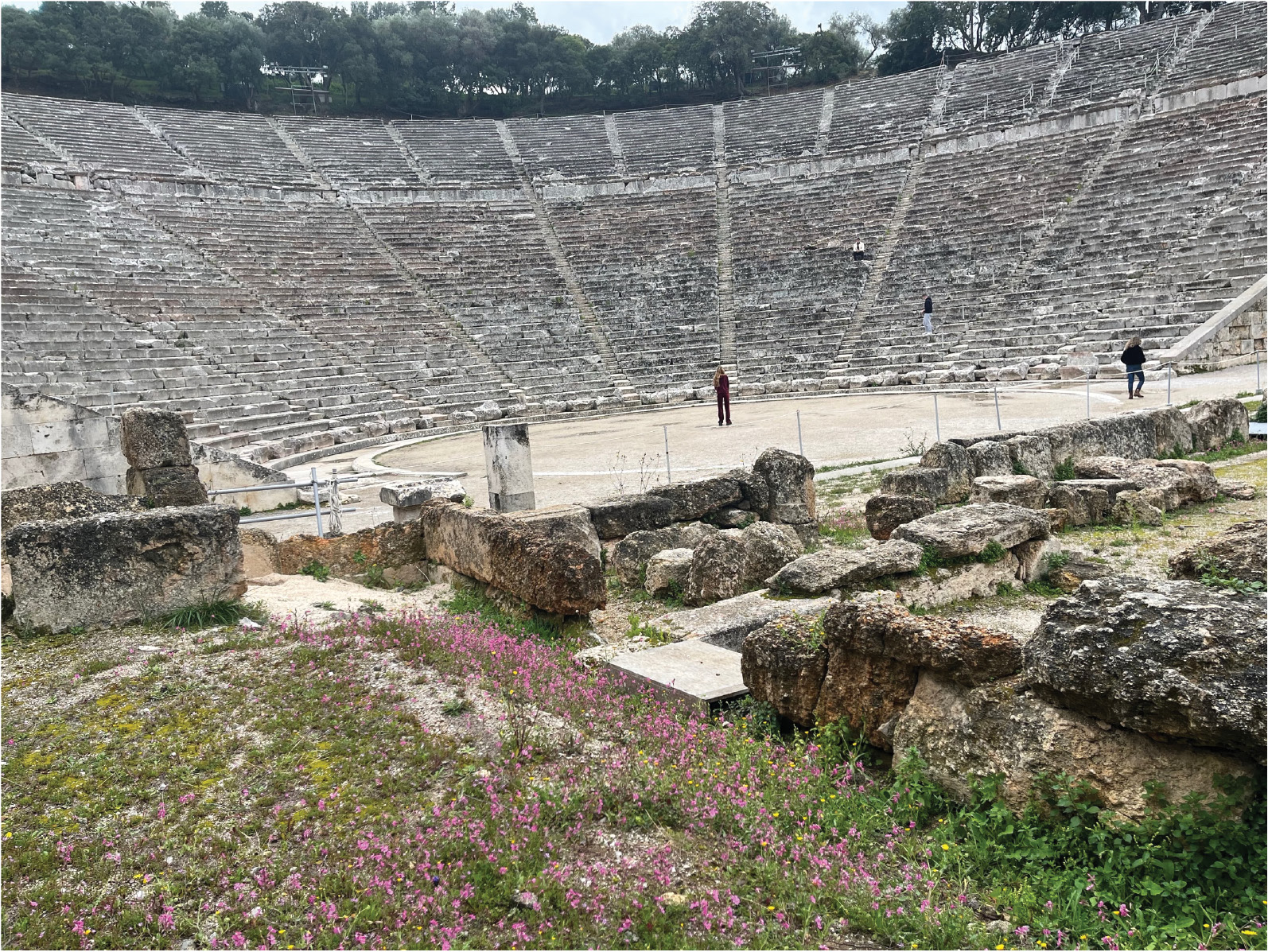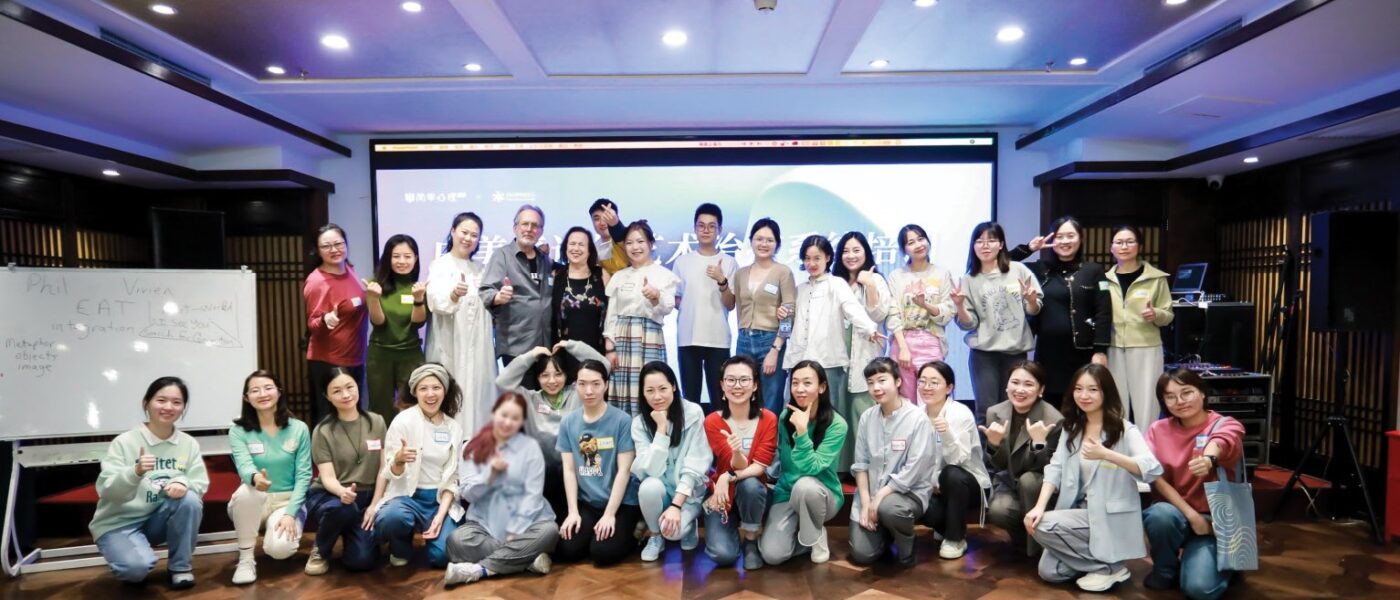
(This piece is the excerpt of the full article published in Volume 10 (2024) issue 1 of CAET)
Author: Vivien Speiser and Philip Speiser
Abstract
This article presents the work of two expressive arts therapists who traveled and taught around the world between February and April 2024. Our journey actually started on October 7, 2023, when we were supposed to start teaching in Israel, and instead found ourselves waking up into the barbaric outbreak of this new Israeli–Hamas war. Since that time and in the aftermath of a world forever marked by this tragedy and its aftermath, we have been searching for ways of being of service and engaging in and amplifying our understanding of the ways in which the arts contribute toward healing and the building of resilience in times of conflict, war, and disaster. During our journey, we teach in established creative and expressive arts therapy training programs in South Africa and India as well as teach in burgeoning and newly developing programs in Zambia and China. Wherever we go we are surrounded by the arts and arts practices and learn again about the lifesaving universality and importance of artistic expression.
Philosophical Underpinning to Our Work
According to Walsh (2001), the arts “help us search again not only for the meaning of life but also the purpose of our individual and collective experience… for ways we might re-create ourselves anew as a human species, so that we may end at last the cycle of violence that has marred our history.” (p. 17)
In this moment of history, much that has been known about our world has shifted. Most of the world is living in challenging and unprecedented times. The issues we are living through permeate local, regional, national, and global boundaries and channels. They are immediate and existential as we negotiate individual as well as global collective anxiety and trauma. Artists are familiar with living and working in this type of liminal space. The creative process involves learning to work with unknowns and ambiguities as part of the act of creation. In our work we hope to be able to continue to make a contribution toward the healing that needs to take place within ourselves and around our world as we move within and beyond these times.
We are always searching for ways to build bridges that cross social and ethnic boundaries and unite people through their common humanity and need for creative expression. We have done so in diverse cultures and across sensitive political divides. We are able to do this due to our personal determination to participate in promoting social justice and our belief in the arts as a catalyst for expression, communication, and change. Our work in pioneering these efforts around the world demonstrates our commitment to the full breadth of what the arts can offer in education, wellness, mental health, and public health. We have heard the expressions of joy and the cries of anguish of the human spirit, and our work has been in response to that call to attention and action.
We believe that both healing and art come out of attempts to make meaning from life’s beautiful and aesthetic spaces. However, it also comes out of the heavy spaces, the complex spaces, the contradictory spaces, and the things that are both finished and unfinished. The arts are the repository of the cultural legacies from the past and contain within them the seeds of hope for the future. All of our work has been guided by the belief that the arts are central to human experience (Dewey, 1934). We believe that the arts reveal metaphorical assumptions upon which we base our actions, and through this revelation explore alternative behaviors. Through the arts new connections can be made between individuals and groups as they exchange stories, perspectives, knowledge, and understanding. The arts allow for the development of empathy and an understanding of difference. It is through the development of empathic understanding of similarities and differences between self and others that relationships are formed, and children and adults can learn to tolerate and accept themselves and each other. Aesthetic-empathy is when we enlist and engage through the arts to help build healthy relationships toward healing. We believe that the complexities that individuals and communities are facing today call for creative- and soul-filled experiences that elicit hope and healing.
The artist, the storyteller, and the healer are what David Abram (1996) calls:
the magicians whose intelligence is not encompassed within the society; its place is at the edge of community, mediating between the human community and the larger community of beings.
(Abram, 1996, p. 6)
Artistic expressions and creative arts interventions are “boundaried” forms with a series of defined procedures that can lead to a wide variety of creative outcomes that can support people as they address traumatic experiences and a complex array of feelings. Engaging the Creative Process allows for a mobilization of resources including the emotional, social, spiritual, physical, and cognitive. The arts build bridges that cross social and ethnic boundaries and unite people. The arts manifest in intrapersonal, interpersonal, sociocultural, political-institutional, and spiritual domains (Speiser and Speiser, 2005, 2007a,b).
We believe that the arts play a significant role in the building of resilience and hope in troubled areas of the world, fostering empathic understanding, deep listening, connection, and equilibrium as a way of countering the destructive elements that arise from these local, national, and regional conflicts and differences. The language of art is a universal language that transcends barriers, speaking directly to and from the heart and allowing a space to express the gamut of emotions in the face of unbearable suffering. The arts can contribute toward the rebuilding of trust in a world marred by global disparities and ecological challenges as well as the disasters, conflicts, and disruptions of war.



